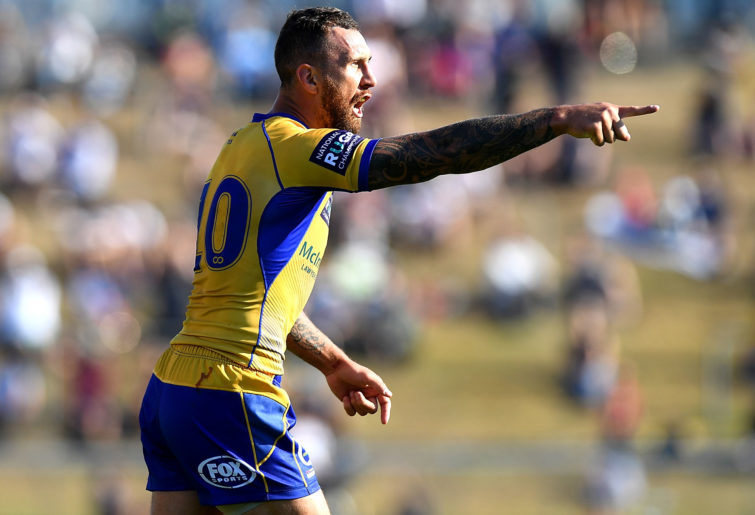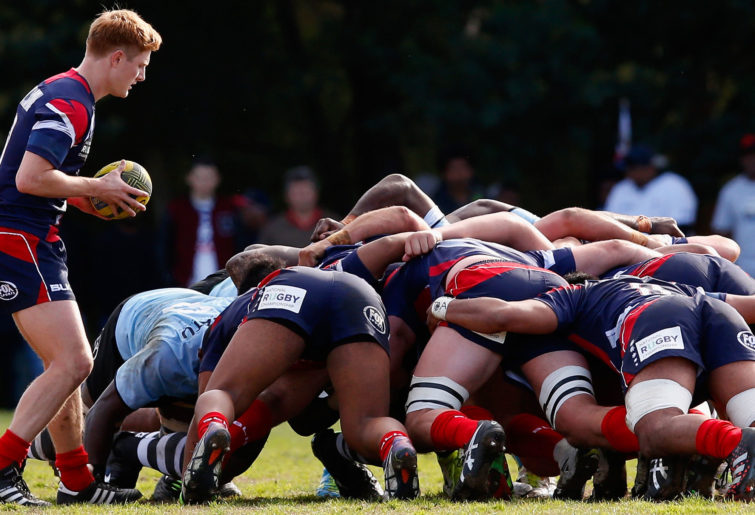There are drums beating louder that the National Rugby Championship is to be no longer, and while Rugby Australia remains steadfastly silent on the matter, the uncertainty gives rise to again consider the optimal domestic structure for the game.
What has been the role of the NRC? Is it fulfilling its objective, and are there better alternatives?
Compared to other domestic sports, rugby is complex, unwieldy and confusing. Internationalism is a key strength but also a weakness within Australia in how it demands multiple complex levels of engagement, detaches fans from personal attachment to the game, pulls players away from domestic roots, makes it expensive to stay competitive against other countries that have more money and is confusing for people who haven’t grown up with the sport.
Nowhere is this demonstrated better than in the divide between grassroots and high-performance rugby. Depending on where one sits, every dollar paid to a high-profile Wallaby is a dollar ripped from the soul of the game, or, alternatively, it is considered pointless investing in grassroots rugby alone if the Wallabies aren’t successful on the world stage and young players have no heroes to aspire to become.
For many, rugby in Australia has become a battleground between ‘our rugby’ and ‘their rugby’. It’s a ridiculous argument that shouldn’t require a zero-sum solution. Indeed everyone in Australian rugby can be a winner, amateur and professional.
It just requires a degree of strategic subtlety and collegiality conspicuously absent over the game’s recent history.

(Bradley Kanaris/Getty Images)
A starting point is to differentiate between the main objectives – one being fan, junior, player and volunteer engagement, the other being pathways to high-performance rugby – and consider how difficult it has proven to be to provide an effective single solution for both concerns.
The NRC fits into this category. Established ostensibly as a link in the professional pathway chain and required to fill the gap between club rugby and Super Rugby, it is designed to ensure there is a larger pool of professional-ready players to compete for Wallabies positions.
That’s all well and good, and we’ve seen a number of players perform well at NRC level continue on to develop into high-quality Super Rugby performers whose progress may not otherwise have been so advanced. Players like Tom Banks, Rob Valetini, Isi Naisarani, Jake Gordon and the Reds’ Smith brothers are among many others.
It’s also a proving ground for rising coaches, fans who have stuck with it will attest to the improvement in quality, and there have been more wins for Australia’s Super Rugby franchises this year.
However, not all has been rosy. For example, five years in and the NRC is yet to throw up a serious candidate for higher honours in the crucial flyhalf position, with Mack Mason, a steady performer in the NRC, infamously failing to measure up for the Waratahs against the Sunwolves in Round 7 this year.

(Matt King/Getty Images)
With respect to fan engagement, the NRC clearly hasn’t worked. For one, there is a perception – primarily in New South Wales but also in other states – that it is in conflict with existing tribal competitions (‘our rugby’ versus ‘their rugby’). Hence we have seen chopping and changing of teams in a short time period.
The NRC’s Wikipedia page describes the competition as “the most important club competition in Australia, following the Super Rugby competition”. That’s a description guaranteed to leave club members around the country scratching their heads.
Too many of the sides are new constructs that provide no historical, natural or logical support trigger for fans. They aren’t true representative or provincial sides in the sense that club members can follow players into higher levels in teams that they themselves naturally connect to.
The NRC also comes late in the season, after Super Rugby, after international rugby and after club rugby, and if fans are not genuinely fatigued by then, they might simply have no strong reason to follow another new team in another competition.
Broadcasting and media coverage certainly reflects this. Relying on live streaming that regularly slips into buffering mode at inopportune moments is unworthy of any national competition.
I am among those critical of Rugby Australia for setting up a competition without providing sufficient resources to promote it, but the truth is that most media – The Roar a notable exception – have by themselves found little reason to engage their viewership and readerships with the NRC.

(Bradley Kanaris/Getty Images)
So while there is valid disappointment that Rugby Australia has only dipped a toe into the water instead of jumping in with conviction and that the progress made in five years warrants persevering with, there is also an element of the ‘use it or lose it’ law at play here.
If the question thus becomes ‘does Australia need the NRC?’, can such a national domestic competition adequately meet the twin objectives of fan engagement and provision of professional pathways?
In terms of fan engagement, rugby people, particularly in Sydney and to a degree in Brisbane, are resoundingly saying no – unless, perhaps, it involved their existing clubs as opposed to a new entity. It’s a different story in the ACT, Victoria and Western Australia, as you would expect, although these are smaller markets.
The matter of professional pathways is somewhat more complex. Super Rugby is a brutally intense high-quality competition that accommodates only the best-conditioned and talented players. It is fanciful to suggest players can be plucked out of the Shute Shield and Queensland Premier Rugby one week and be competitive against the Crusaders in Christchurch the next.
But is it possible to enjoy what club rugby currently offers (clubs with individual histories, long-held rivalries and engaged fans), to add a national component without diminishing what exists at a local level and to find other ways to ensure that the best players are prepared for professional rugby?
Perhaps. And here’s the rider: it would require stripping away the agenda-driven behaviour of some involved in club and state rugby circles and further demonstration by Rugby Australia, under Raelene Castle, that their objectives are genuinely about inclusivity and better outcomes rather than control at all costs.

(AAP Image/Daniel Munoz)
For example, there would be no point trashing the NRC if all it achieved was to allow Sydney’s Shute Shield to become the de facto professional pathway, concentrating all of Australia’s best players into Sydney and with any wealth generated siphoned into a select few clubs only.
Sydney Rugby Union president David Begg recently spoke to this possibility, grasping at fool’s gold, when he said of the Shute Shield; “It now truly is a semi-professional competition where we are getting players ready for professional rugby”.
Very confusing for those who have been told repeatedly that Sydney club rugby represents the heart of grassroots rugby.
Clubs that have visions of being the next Saracens or Toulon should undertake a reality check and consider how:
the rugby population base (thus revenue base) in the UK and France is many times larger;
- funding shortfalls are met either by accumulation of massive amounts of debt or the largesse of wealthy private owners, not by meat raffles or a few pokies in the corner of the bar;
- rugby is spread geographically through these countries, not concentrated in one city;
- players in Australia are contracted to the central governing body, not to the clubs, as they are in England and France; and
- players in Australia are free to compete for contracts in more lucrative overseas markets.
Nevertheless, there is a potential path forward that doesn’t require Rugby Australia to hand over the keys to the game to Sydney Rugby Union – which some might see as rewarding the wreckers – but does tap into the Shute Shield’s obvious strengths.

(Darrian Traynor/Getty Images)
Rugby Australia could cut the NRC, not as an acknowledgement that it has lost any war with the Sydney clubs but as a way to simplify the structure of the game, to step around governance issues involving the SRU and NSWRU and to focus fan and media attention around a far more simply understood and more popular narrative.
For example, what might be possible is a shift to a hybrid model that blends the very best tribal aspects of club rugby with some national component – say, with introducing the Vikings, Rising and Force at a later stage to ensure geographical balance and serve as a complement to the existing club competitions, not as a competitor to them.
That’s potentially an outcome that would have far improved commercial sponsorship prospects and is one which Fox Sports has already indicated interest in supporting.
It’s also a potential outcome that might create value for the game and for broadcast partners. Not at AFL or NRL level, to be sure, but real, mutually beneficial outcomes. Anyone can get on television if you pay enough money, but to be sustainable rugby needs to be paid for providing the content.
There would need to be safeguards in place to ensure that the best players didn’t all gravitate to one or two clubs, but that’s detail that shouldn’t prove insurmountable if there were a genuine desire from all parties to improve rugby outcomes in Australia.
Needless to say, it would also be a way for Rugby Australia to show faith with large sections of the rugby public who have been calling for a heightened focus on the club game.
As for the matter of professional player development, the loss of the NRC would initially be seen as a blow, one that would only partially be made up through a ramped up nationwide conclusion to the club season.
There are, however, other outside-the-box ways to ensure that developing players are provided with enough high-level coaching and matches to bridge to Super Rugby, including altering the way Super Rugby franchises structure their preseasons and work with their non-international players through closer working relationships with overseas competitions, including in New Zealand and potentially even some cross-over engagement with Global Rapid Rugby.
Remember that current Test players are already absent from the NRC. If the next cohort of developing players are playing club rugby, a beefed up ‘play-off’ series with other semi-professional players before moving into improved coaching and conditioning programs aligned with the Super Rugby franchises, is that really far removed from the current situation anyway? Without the cost?
Personally, I’ve been on board with the NRC since day one, but that makes me a member of a very exclusive club.
Certainly it is hard to imagine today’s NRC players will miss playing in front of paltry crowds for what is barely pocket money, all for the chance of winning a fancy toast rack.
What an improved domestic structure is not is an opportunity for Australia to withdraw from SANZAAR, no matter how populist that idea might be. The AFL and NRL derive many advantages from operating domestically, but this does not mean that Australian rugby can be like them solely for the reason that it might want to.
Rugby operates in a global professional marketplace, and all components of the sport, including grassroots, require substantial, secure and repeatable sources of revenue.
Putting the NRC to rest might eventually be a pathway to a domestic revenue stream, as opposed to the cost it currently represents. But for now, while the search for an elusive domestic solution goes on, Australia’s fortunes remain inextricably linked to those of its global partners.

































































































